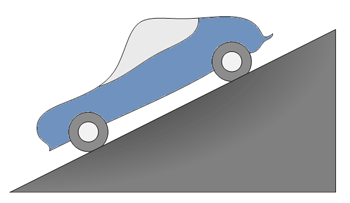When navigating rough, hilly terrain, it is not always easy to balance use of the throttle and the brake pedal to achieve precise vehicle control downhill, especially in slippery conditions. Initially designed to assist all-wheel and four-wheel-drive vehicles lacking a low range (starting with the Land Rover Freelander), Hill Descent Control (HDC) can now be found on many four wheel drive trucks and passenger cars, both with and without a low range.

HDC operates in tandem with ABS and traction control, braking each wheel independently to keep the vehicle’s wheels turning at the desired speed without locking up so that they can transmit sufficient lateral stability forces. If the rear wheels were to lock up, the vehicle could skid sideways and possibly roll over. Once HDC is active, it can maintain a low speed typically between 2 and 20 mph (as in the Ford SVT Raptor). It will also resume holding that speed if the vehicle is accelerated anywhere up to around 40 mph and then slowed back down. HDC switches off completely above 40 mph.
To activate Hill Descent Control, there is usually a button near the shifter labeled DSC. Once this button is pressed, if no accelerator input is received from the driver, the system will slow the vehicle to a default speed of around 7 mph. Speed can then be adjusted in 1 mph increments either by tapping on the accelerator or brake pedal (Ford) or using the cruise control buttons on the steering column (BMW and Land Rover). Some systems will also operate in reverse.
HDC, like any braking system, cannot be used for extended periods of time without being allowed a cool down period between uses to avoid overheating the brakes. Later implementations of Hill Descent Control combine HDC with low-range gears and engine control to reduce wear on the brake system as well as improve low-speed control.
Hill Descent Control can be part of a wider suite of systems included within the Electronic Stability Control (ESC) Module, and uses the same range of sensors and actuators, including the brake master cylinder, throttle and brake position sensor, and wheel speed sensor.

